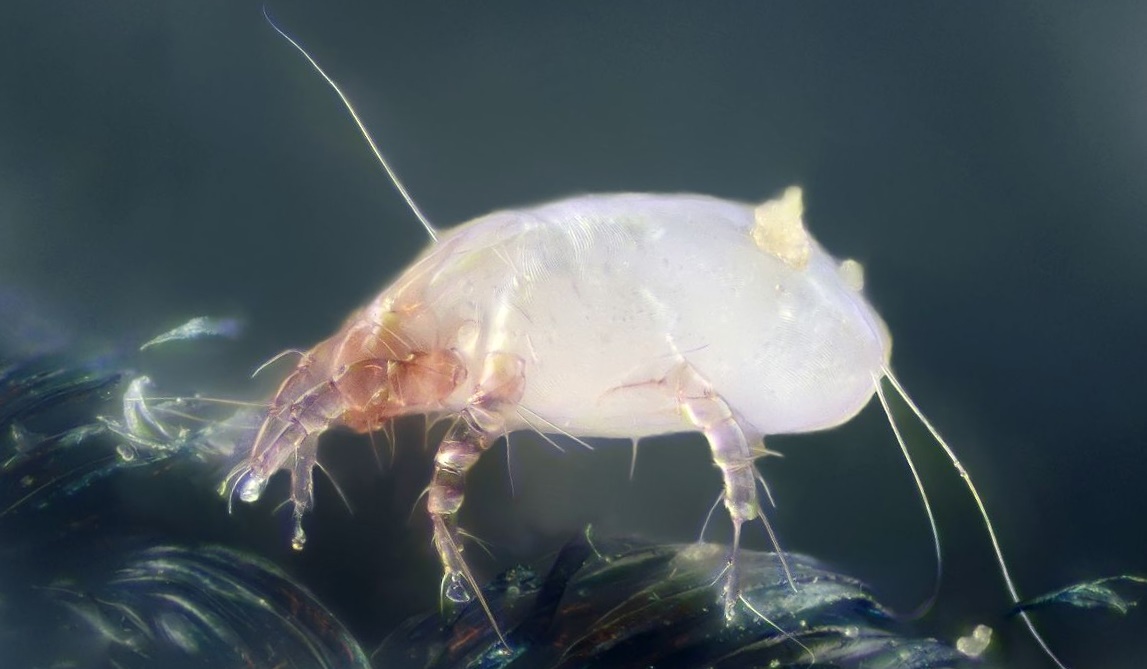Barely visible to the naked eye, mites have eight legs and a round body and are seldom noticed until they have built up sufficient numbers to be a major infestation. They are not insects but are arachnids, related to spiders.
 The typical mite emerges from its tiny egg in a dark crevice as a six-legged nymph, growing by a series of moults and acquiring another pair of legs in the process. Some species can survive starvation for up to six months.
The typical mite emerges from its tiny egg in a dark crevice as a six-legged nymph, growing by a series of moults and acquiring another pair of legs in the process. Some species can survive starvation for up to six months.
Species of Mite
- House Dust Mite - most houses have these as they live on our mattresses, feeding on tiny particles of shed skin.
- Furniture Mite - occurs in damp upholstery.
- Flour Mite - infests damp cereals or pasta and causes “Grocer’s Itch”, in people who handle infested commodities.
- Itch Mite or Scabies Mite - causes Mange or Scabies in pets by burrowing into the skin, causing an irritating rash.
- Bird Mites - frequently enter houses from old nests of sparrows, starlings or house martins, or from poultry.
- Harvest Mites - may bite people if brought in on the coats of dogs or on clothing.
- Red Spider Mite - the most conspicuous mite that enters houses. A plant feeder which comes indoors in spring to seek egg-laying sites and again in autumn to hibernate.

How to get rid of Mites
For a suspected Mites infestation, we strongly recommend you act immediately by contacting a professional pest control company, preferably a member of the BPCA.
Self-treatment of a Mite infestation is unlikely to be successful. Failed treatments will occur if the accurate knowledge of Mites is absent. A trained professional will have the technical expertise and access to a range of professional use products and equipment which are not available to the public.
Having problems with Mites?
Use a trained professional pest controller.
Search for your local BPCA member